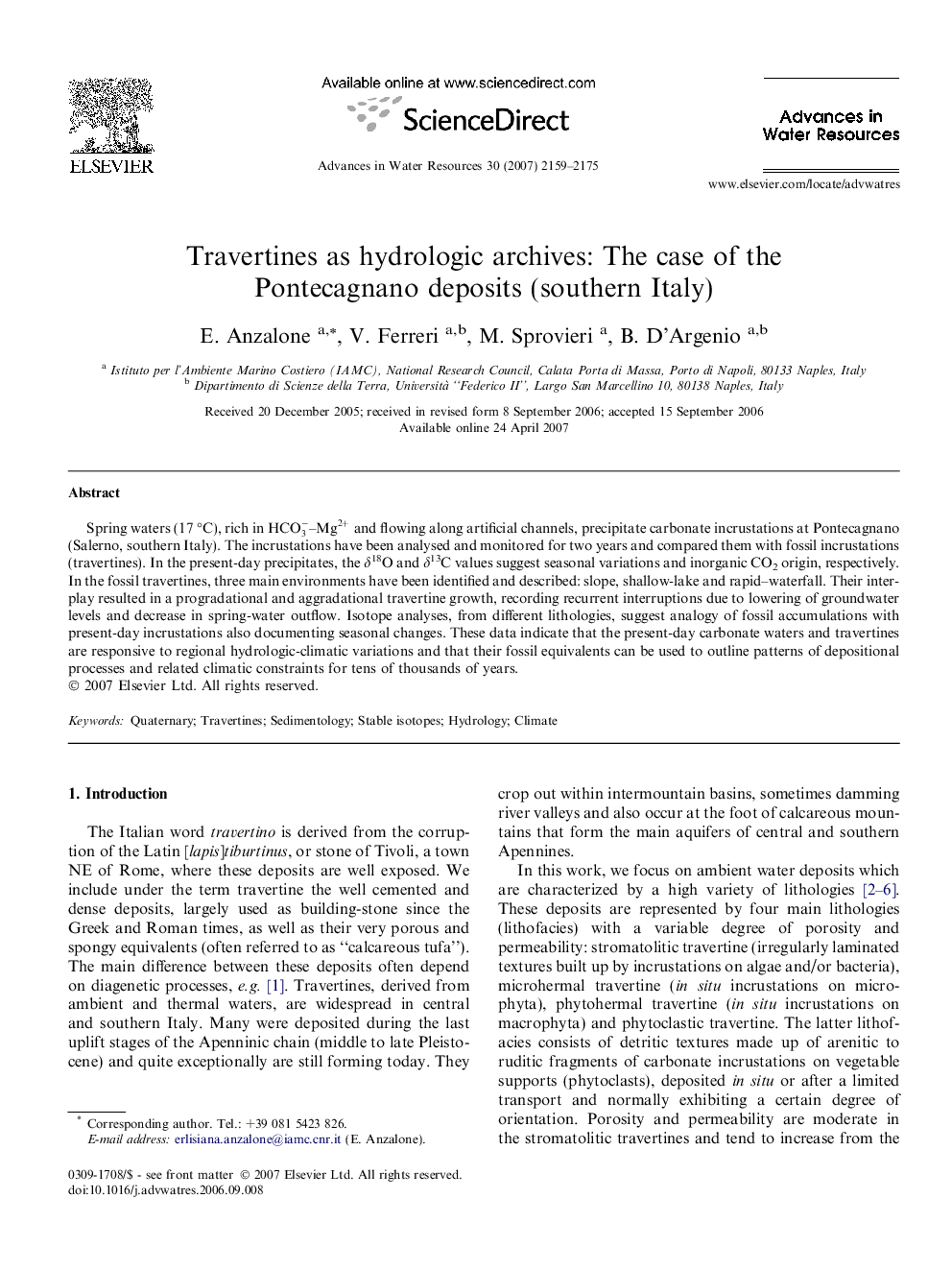| Article ID | Journal | Published Year | Pages | File Type |
|---|---|---|---|---|
| 4526746 | Advances in Water Resources | 2007 | 17 Pages |
Spring waters (17 °C), rich in HCO3-–Mg2+ and flowing along artificial channels, precipitate carbonate incrustations at Pontecagnano (Salerno, southern Italy). The incrustations have been analysed and monitored for two years and compared them with fossil incrustations (travertines). In the present-day precipitates, the δ18O and δ13C values suggest seasonal variations and inorganic CO2 origin, respectively. In the fossil travertines, three main environments have been identified and described: slope, shallow-lake and rapid–waterfall. Their interplay resulted in a progradational and aggradational travertine growth, recording recurrent interruptions due to lowering of groundwater levels and decrease in spring-water outflow. Isotope analyses, from different lithologies, suggest analogy of fossil accumulations with present-day incrustations also documenting seasonal changes. These data indicate that the present-day carbonate waters and travertines are responsive to regional hydrologic-climatic variations and that their fossil equivalents can be used to outline patterns of depositional processes and related climatic constraints for tens of thousands of years.
